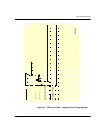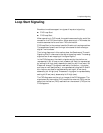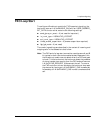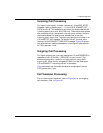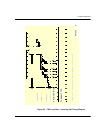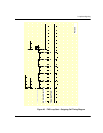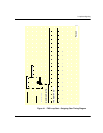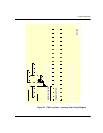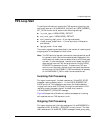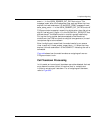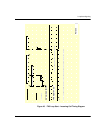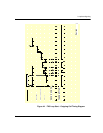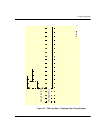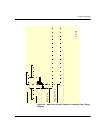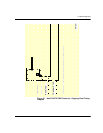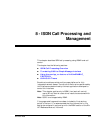
Loop Start Signaling
November 2009 309
FXS Loop Start
To configure a Brooktrout module for FXS loop start signaling, the
host must issue an L4L3mENABLE_CAS with an IISDN_ROBBED_
BIT_DATA structure that contains the following settings:
in_trunk_type = IISDNtt5ESS_LPSTART
out_trunk_type = IISDNtt5ESS_LPSTART
max_incoming_digit_count = 0 (no digits collected)
timed_answer_supervision = 1 (timer expiration indicates far
end answer)
fgb_fgd_mode = 0 (not used)
The remaining settings are described in the context of incoming and
outgoing calls in the subsections that follow.
Note: The FXO end of a loop start connection uses the same A and B
bit values for both idle and connected states. Because of this,
the Brooktrout module cannot detect when the FXO end goes
on hook. To idle the channel, the host must detect the lack of
data coming from the FXO end and issue an L4L3mCLEAR_
REQUEST to disconnect the call. To ensure the FXO end
returns to an idle state, the host must also reset the channel
by issuing an L4L3mDISABLE_CAS immediately followed by
an L4L3mENABLE_CAS in order to make another call.
Incoming Call Processing
During an incoming call, the host receives an L3L4mPRE_SEIZE
message if send_preseize_event = 1 in the IISDN_ROBBED_BIT_
DATA structure. This message is sent when the module detects
ringing from the far end (FXO end). No digits are collected in FXS
loop start mode; to answer the call, the host must issue an
L4L3mCONNECT_REQUEST message.
Figure 43 shows how a Brooktrout module processes an incoming
call received over an FXS loop start trunk.
Outgoing Call Processing
During an outgoing call, the host receives an L3L4mPROGRESS in
response to the L4L3mCALL_REQUEST to start the call. The host
then receives an L3L4mSEIZE_COMP message if send_seize_comp_



